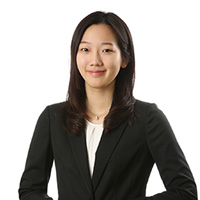[Newsmaker] Schools’ new COVID-19 rules clouded with uncertainty
By Im Eun-byelPublished : Feb. 8, 2022 - 16:24

Teacher unions are raising criticism of the Ministry of Education, accusing it of putting the burden of COVID-19 management on schools and teachers.
On Monday, the Education Ministry announced that schools will move to “normalcy” in attendance measures for the new semester, flexibly responding to virus situations.
Under the new measure, schools can change their attendance policy based on the new four-stage plan suggested by the ministry.
Teachers’ associations, however, are criticizing the move, claiming it puts the burden of preventing infectious disease spread on teachers and faculty members.
“The new measure puts the responsibility of epidemiological investigation, rapid antigen testing, infectious disease prevention and control on teachers,” the Korean Federation of Teachers‘ Associations said. “This cannot lead to the proper recovery of education or effective infectious disease prevention.”
“Parents are not likely to agree with the attendance measure that continues to require students to attend classes even when there are more than 100 students confirmed with COVID-19 or isolated in certain schools,” it added.
The Korean Teachers and Education Workers Union also criticized the new system, arguing it is an excessive request for schools.
“It is not an exaggeration to say that this protocol is an order for schools to carry out the infectious disease prevention practices,” the union announced.
“This year, teachers and faculty members are even taking the responsibility of the disease control authorities in a structure where schools have to make their own decisions and take responsibility for their choices,” it said.
“The education offices and the disease control authorities should support the infectious disease prevention at schools while schools function only as an educational institution,” the union added.
Parents showed mixed responses to the new rules.
“Some predict there will be more than 100,000 new confirmed cases a day by the end of this month. I am worried about what will happen at schools if students have to attend classes. I hope schools will allow students and their parents to decide,” said Kim Ji-yoon, a parent in her 30s with two children.
“As the omicron variant will be treated like a seasonal flu, I think schools should return to normalcy. It has been a while since children could study and play with their friends for a long time” a person wrote on an online community website frequented by parents. “But, of course, I am still worried.”
Under the new measure, schools will go hybrid with online and offline classes if more than 3 percent of the total students are confirmed for COVID-19 in a day or if the number of those who have been restricted from attending classes surpasses 15 percent.
On Monday, the Education Ministry announced that schools will move to “normalcy” in attendance measures for the new semester, flexibly responding to virus situations.
Under the new measure, schools can change their attendance policy based on the new four-stage plan suggested by the ministry.
Teachers’ associations, however, are criticizing the move, claiming it puts the burden of preventing infectious disease spread on teachers and faculty members.
“The new measure puts the responsibility of epidemiological investigation, rapid antigen testing, infectious disease prevention and control on teachers,” the Korean Federation of Teachers‘ Associations said. “This cannot lead to the proper recovery of education or effective infectious disease prevention.”
“Parents are not likely to agree with the attendance measure that continues to require students to attend classes even when there are more than 100 students confirmed with COVID-19 or isolated in certain schools,” it added.
The Korean Teachers and Education Workers Union also criticized the new system, arguing it is an excessive request for schools.
“It is not an exaggeration to say that this protocol is an order for schools to carry out the infectious disease prevention practices,” the union announced.
“This year, teachers and faculty members are even taking the responsibility of the disease control authorities in a structure where schools have to make their own decisions and take responsibility for their choices,” it said.
“The education offices and the disease control authorities should support the infectious disease prevention at schools while schools function only as an educational institution,” the union added.
Parents showed mixed responses to the new rules.
“Some predict there will be more than 100,000 new confirmed cases a day by the end of this month. I am worried about what will happen at schools if students have to attend classes. I hope schools will allow students and their parents to decide,” said Kim Ji-yoon, a parent in her 30s with two children.
“As the omicron variant will be treated like a seasonal flu, I think schools should return to normalcy. It has been a while since children could study and play with their friends for a long time” a person wrote on an online community website frequented by parents. “But, of course, I am still worried.”
Under the new measure, schools will go hybrid with online and offline classes if more than 3 percent of the total students are confirmed for COVID-19 in a day or if the number of those who have been restricted from attending classes surpasses 15 percent.


















![[Today’s K-pop] NCT127 announces world tour plan](http://res.heraldm.com/phpwas/restmb_idxmake.php?idx=642&simg=/content/image/2024/11/05/20241105050641_0.jpg&u=20241105163532)